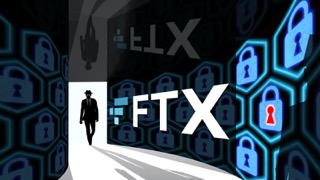Bitcoin Ordinals inscriptions have been losing steam despite the interest in Bitcoin (BTC) exchange-traded funds (ETFs) and the upcoming halving event.
Monthly Ordinals sales fell 61% to $335 million in January, down from $868 million in December, the month with the highest sales in Ordinals history, according to NFT data aggregator CryptoSlam. Ordinals are the first iteration of nonfungible tokens (NFTs) minted on the Bitcoin network.
The oversaturation of the NFT market and collections from other blockchains are among the main reasons behind the decline in Ordinals sales, according to Anndy Lian, an intergovernmental blockchain expert and author of the book NFT: From Zero to Hero.
“With an influx of new projects and artists entering the space, buyers now face a plethora of options. The spoil-for-choices situation got more obvious when other blockchains like Solana were picking up more steam,” Lian told Cointelegraph.
While monthly Ethereum NFT sales also declined by 2.2% to $355 million, NFT sales on Avalanche rose 89% to $46.7 million in January, up from $24.7 million in December.

Dokyo NFTs accounted for the lion’s share of the sales volume, as the collection generated $31.4 million for the Avalanche network in January, which represents 67% of the blockchain’s monthly sales. In comparison, Dokyo only generated $7.64 million worth of sales in December. Dokyo is a collection of 5,555 NFTs launched by pseudonymous creator 0xBrando.
Dokyo NFT sales started surging in November. Dokyo’s 24-hour sales volume surpassed Bored Ape Yacht Club sales on Nov. 24, as it briefly became the most traded NFT collection across all blockchains. Dokyo also climbed to the top of the sales leaderboard on Jan. 15, according to CryptoSlam data.
Beyond competing NFT collections, Lian believes that Ordinals sales were also affected by their controversial status in the Bitcoin community and their technical complexities:
“The launch of Ordinals has been controversial in the Bitcoin community because some believe the activity to be similar to spam email. This could have affected the reputation and legitimacy of Ordinals among some Bitcoin enthusiasts.”
On the other hand, Sebastien Guillemot, co-founder of Web3 gaming engine Paima Studios, said that interest from Ordinals is moving to Bitcoin layer-2 solutions. Guillemot said:
“Many who were working on Ordinals have pivoted to Bitcoin layer 2s, especially with the hype around BitVM and OP_CAT. It wouldn’t surprise me if developers and investors were rotating into this narrative.”
Despite the sales slump, total Ordinals inscriptions keep growing. According to Dune data, there are over 59 million ordinal inscriptions on the Bitcoin network.
Will the Bitcoin halving reignite interest in Ordinals?
Mirroring the sales decrease, the average Ordinals sale price also fell 25% to $1,340 in January, from $1,793 in December. Despite the decrease, large crypto firms continue showing interest, as Binance, the world’s largest crypto exchange, announced the launch of its Ordinals marketplace on Feb. 1.
Lian expects the upcoming Bitcoin halving to reignite interest in Ordinals. He said:
“The reduced supply of Bitcoin could make each satoshi more valuable and scarce, thus increasing the appeal of Ordinals as unique and collectible assets. Additionally, the halving could drive up the transaction fees on the Bitcoin network, which could incentivize miners to process Ordinals transactions and secure the network.”
In the 11th edition of the “State of Crypto” report published on Feb.1, 21Shares, the world’s largest crypto exchange-traded product (ETF) provider, wrote that Ordinals could offer Bitcoin more use cases, beyond just being a store-of-value asset:
“We expect innovations like Ordinals and BRC-20 tokens to drive more demand for Bitcoin and expand use cases on the network.”
Related: ‘No such thing as spam’ — OKX exec on Bitcoin Ordinals










